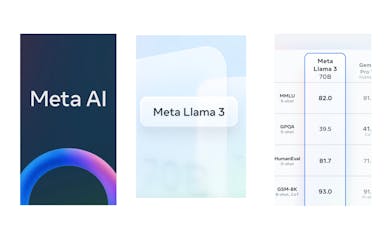The founder of Typefully shares his best tweets

Fabrizio Rinaldi, co-founder of Typefully, talks about building connections on Twitter, Twitter competitors, and finding inspiration outside of the office.
If you need advice about building a community on Twitter, Fabrizio Rinaldi is a good person to turn to. He received a Product Hunt Maker Grant last year for Typefully Pro, a tool that helps you write tweets and threads distraction-free, with analytics and engagement features to build your audience. He’s also #buildinginpublic.
With a supportive community behind him (and 20 other launches under his belt), Fabrizio’s Typefully Pro launch reached #1 Product of the Day. We learned more about how he got there!
When did you start building products?
This makes me feel very old, but my journey as a founder began in 2015 when I designed a minimal Gmail client for Mac called Boxy. It was developed by my co-founder Francesco — at that time I had very little programming skills so I focused mostly on product and design.
It all started from a tweet: I posted a mockup of what this little app could look like, and Frank DMed me a prototype.
We had created some hype by publishing screenshots and getting email subscribers before launch, but we were surprised by the amount of upvotes and tech press coverage we got. This gave us a first taste of how fun and satisfying it was to make products (and money) online, before “building in public” was a thing.
How have you used Twitter to build a community and your products?
I honestly think that my Twitter profile has been my most important online asset through the years. In fact, the best opportunities I had always came from Twitter.
Besided my co-founder Francesco, I even met our first hire, Alberto, on Twitter so I’m a living example of how well Twitter can work to create these connections. I still haven’t found another plaform with the same kind of serendipity and network effects.
Looking for a co-founder or teammates on Twitter makes a lot of sense, especially if you’re building SaaS, but also for info products or even media company. It’s just so easy to show your work and connect with people, ask for referrals, or pitch them directly. Authenticity wins, so I’d just recommend letting your work speak for you instead of trying to make things sound cooler than they are.
A pivotal moment for me as a maker happened one weekend in June 2020 when I decided to make a little side project: a webapp to write Twitter threads. I thought the official experience to write thread was lacking, and still is.
This little webapp later became Typefully, when we decided to “promote” it as a core project we’d work on together as a team. It’s now growing so fast that it’s actually becoming our core business.
Can we dissect a couple of your tweets? Why do you think these performed well? What did you learn from them?
My most-popular tweet in terms of likes is this one about my company ARR (annual recurring revenue). In fact that’s also my best performing tweets in terms of profile visits, which I check through my Typefully grow page. The Twitter bubble of founders and tech people goes crazy for these numbers and that type of signaling.
I also believe the simple layout, with the nice arrows and the repetition, helped it perform so well. People seem to really like well-written, minimal tweets — viral threads often have initial tweets with just a couple of simple sentences.
It was also very honest: “A ton of work to do, but $1M ARR is on the horizon” reflected the spirit of the tweet. I truly felt like I still had (and have) and ton of work to do. Without that line, it would have sounded just like bragging (which still is, a little bit).
I love personal websites, they’re often playgrounds for designers and developers, and in that way they’re much better than portfolios. I always tweet about my side-projects, and my personal website is one of them.
I tweeted about the latest iteration of my site in August 2021, citing the stack that I used, and got a ton of interesting responses and DMs.
These responses always help me catch bugs, refine the project, and come up with improvements and new features. This makes tweeting about the things I build an essential step that I always regret missing.
When did you decide to go full-time on your own business?
For a couple of years, my co-founder Francesco and I worked at a tech company in Milan. It was a formative experience and we had a great salary, but after a while, we realized we really wanted to work on our own projects.
We both thrive when we have ownership of what we do, and we love to build and launch products on our own.
After months of late-night chats with lots of pizza, we finally decided to quit in 2018 and went all-in on our side projects. It was weird to not call them “side” projects anymore and it was scary to make this jump.
We started to work on our first SaaS products and also realized we still had a ton of things to learn as founders and builders. It was really like starting from scratch again.
After quitting our jobs, in 2019 we traveled *a lot*. It was overcompensation for a couple of years of office life, but it helped us clear our heads and look forward. In fact during these trips we came up with the idea of Mailbrew, which is now our core business.
Some of the early work on Mailbrew happened in Bali for example, but we finally shipped it after we went back to Italy. Specifically, we launched it right at the start of the COVID pandemic, which was pretty scary. Things worked out though and Mailbrew is the product that made us truly profitable.
Going back to that pivotal moment when you created Typefully — you created a webapp to write Twitter threads. How did Typefully Pro evolve from that?
At some point we realized that Typefully has such strong word of mouth and momentum, that we needed to monetize it and take it more seriously.
We started thinking about Pro features and how we could re-shape the product. Instead of thinking of it as “just” a thread writing app, we started thinking of it as a powerful and comprehensive app for Twitter creators with features like detailed analytics about tweet performance. A “Grow” tab was one of the first Pro features we added.
Instead of working for months on an entire Pro featureset though, we decided to proceed iteratively. We let users “lock” a discounted Pro price to support the development and slowly released Pro features over the course of many months.
We’re still adding Pro features now while keeping the price the same so it gets more and more convenient to upgrade. Typefully wasn’t making any money in May 2021; now it just got to $9k MRR, so the strategy worked out very well.
How do you view competition in this space, including against Twitter’s own tools?
Twitter tools are becoming some of the hottest SaaS products right now, at least in my bubble. It’s great that founders and developers are finding so many clever ways to enhance the Twitter experience and empower creators.
Personally, I feel challenged by all these amazing tools and founders, and they push me to constantly refine our roadmap and improve Typefully.
I also see many of these products become bloated and don’t focus enough on user experience, but mostly on having tons of features. I prefer to sacrifice the featurset a little bit while making the product insanely good at its job-to-be-done.
You’ve had 21 launches on Product Hunt! 🎉 What do you think is one misconception people might have about launching and why?
A lot of people, too often myself included, see launching as a starting point or an ending point, when it’s neither. It’s not a starting point because if you don’t have a solid beta — an actual product that people want — launching will do absolutely nothing for you. And it’s not an ending point because launching and not following up with updates will also kill your momentum.
I think you just have to see launching in the context of a strategy and consider it important, but not something that should distract you from building your product.
What’s next? What do you want people to know about Typefully?
We’re just getting started! Typefully is more mature than it was months ago, but there are big things in our roadmap that will change the game completely and empower Twitter creators in many new ways.
We want to help people craft beautiful, engaging content that is native to Twitter and help them grow organically. If this is something you’re interested in, the only thing I ask you is to try Typefully and send us honest and brutal feedback.
And follow me on Twitter to make sure to not miss our next updates.
Comments (1)
Rajat Dangi 🛠️
🚀 Mockey.ai and Blinkstore.in
More stories

Kyle Corbitt · How To · 3 min read
What we've learned in 3 days of Llama 3

Aaron O'Leary · Announcements · 2 min read
Introducing Shoutouts

Finn Lobsien · Opinions · 5 min read
Can Devin AI Replace Product Managers?

Aaron O'Leary · News · 2 min read
Meet Nvidia's new localized AI chatbot

Sarah Wright · News · 2 min read
The top 15 AI products from 2023

